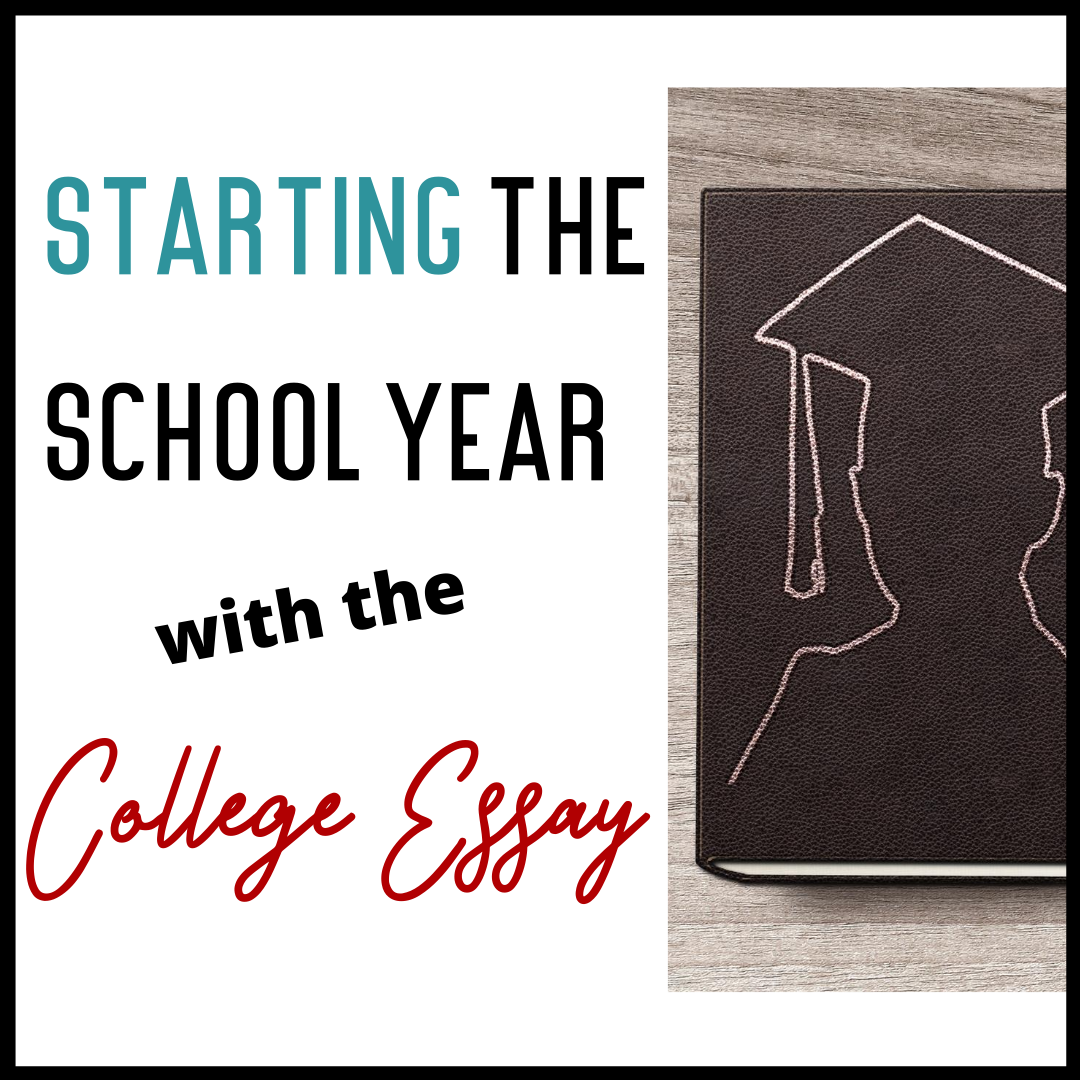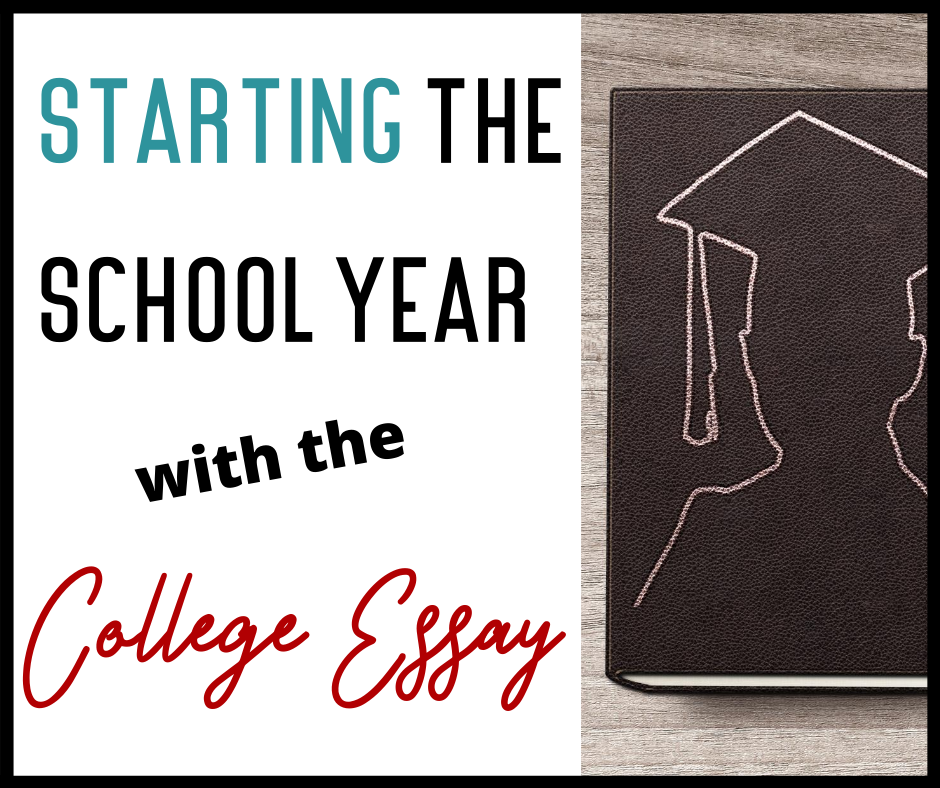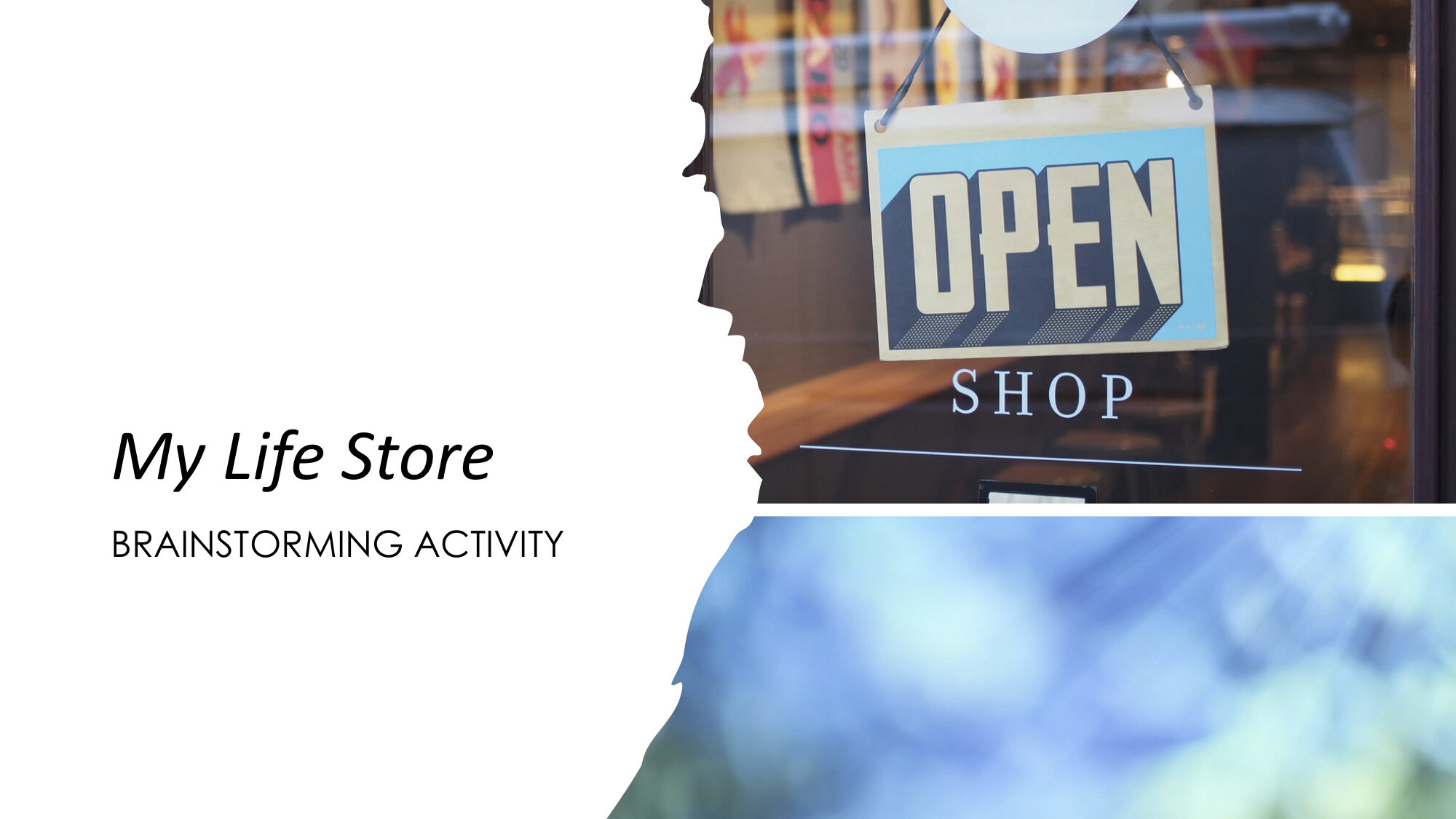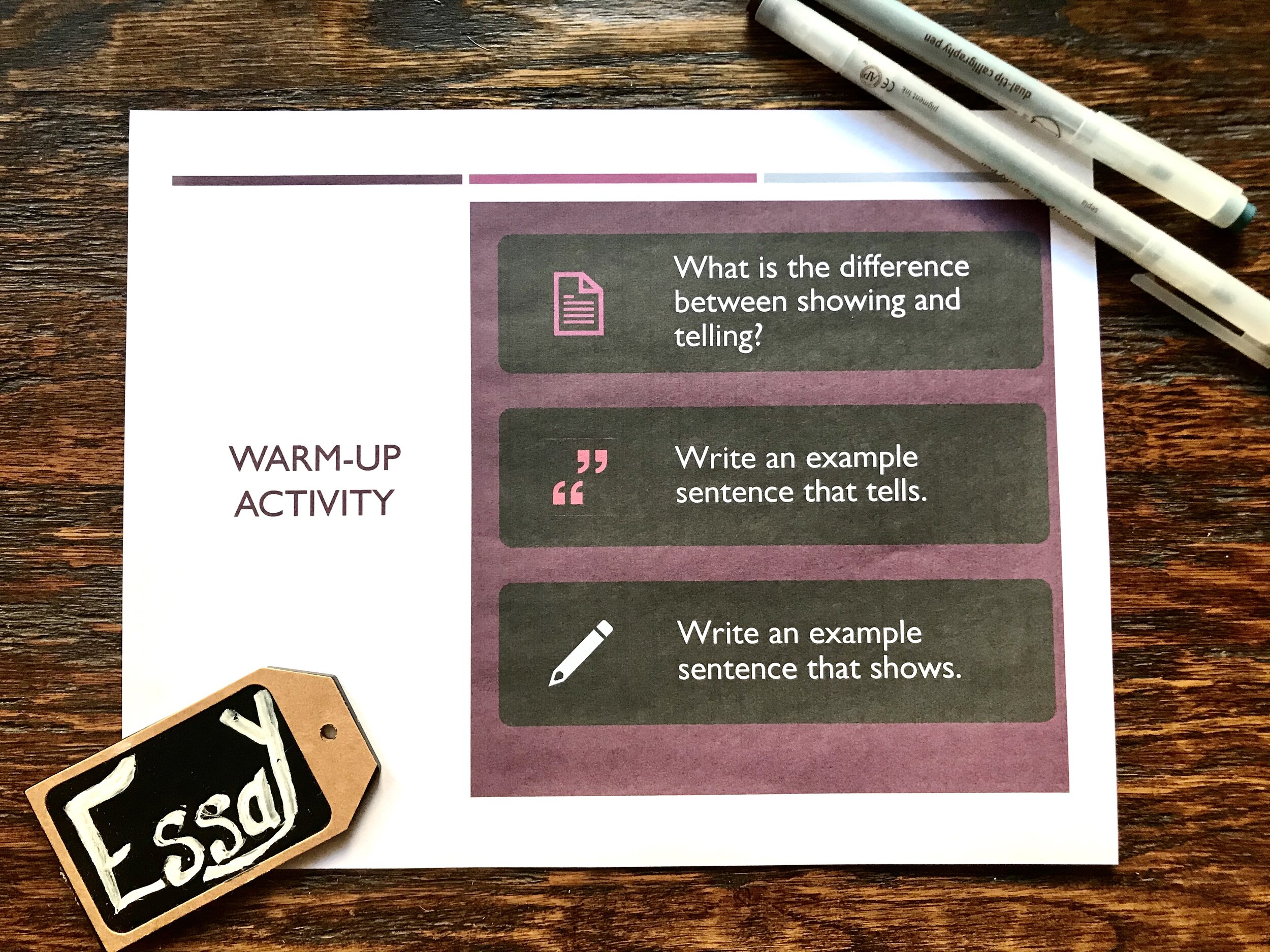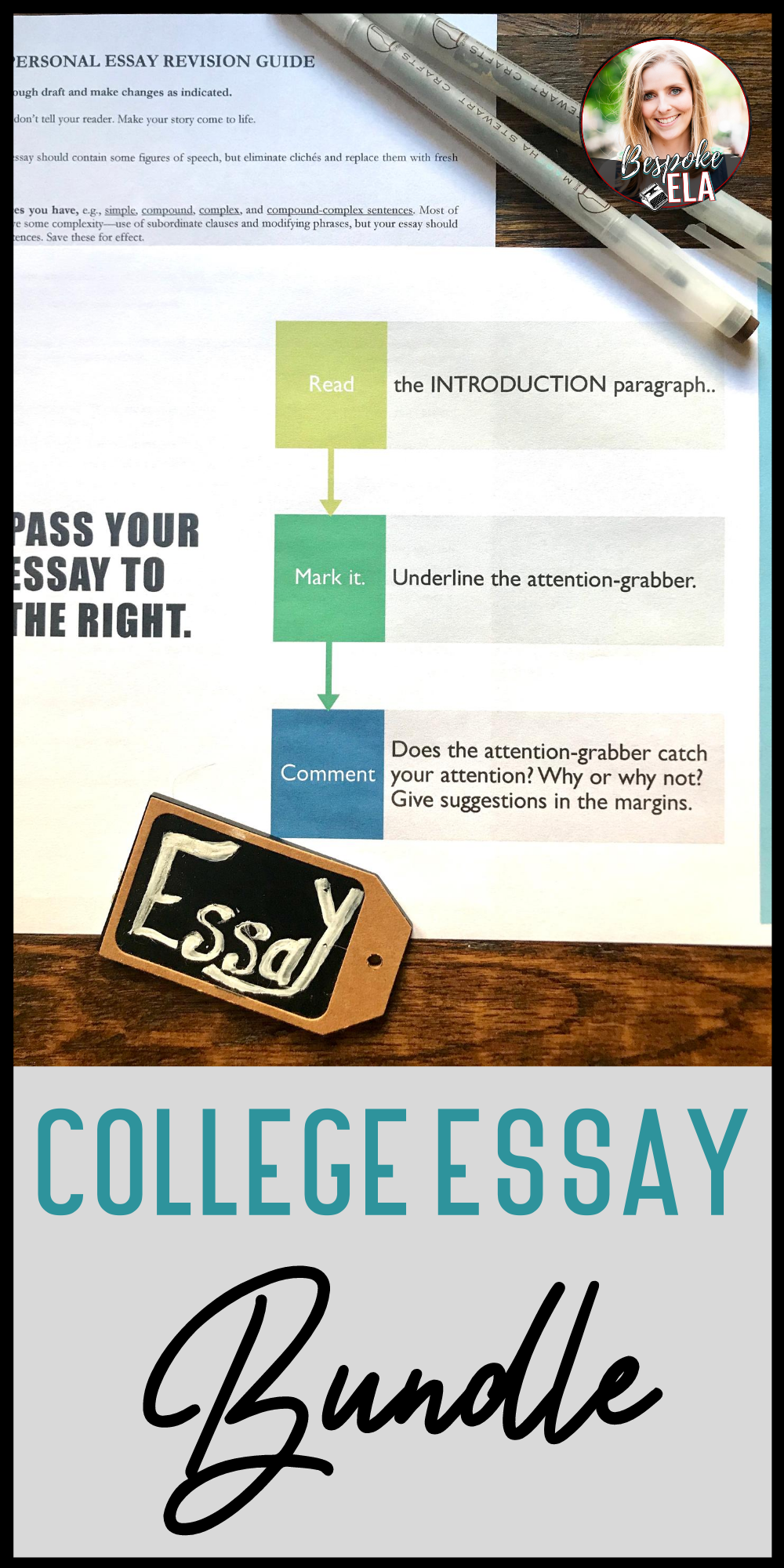If there is one writing assignment that has real life and real-world purpose, it’s the college essay. I have never seen my students more motivated to write and more motivated to work on writing than with this particular assignment. And the reason is simple: this writing assignment truly matters to students.
Of course, not every single student will need to write a college essay; nonetheless, the college essay serves several purposes— especially at the beginning of the school year. Since I started my teaching career, I have started the school year with a college essay unit. It allows me to:
Assess student writing abilities, needs, and skills at the beginning of the school year.
Get to know my students and their life stories.
Target basic writing skills such as essay structure, topic sentences, and more.
Take time to make plans for the rest of the grading period and semester.
Create a writing community in the classroom.
Here are some lesson ideas for starting the school year with a college essay unit.
Brainstorming Lessons
No matter the writing assignment, students often need help brainstorming ideas. This is certainly the case for the college essay since the goal is to showcase strong character traits with the purpose of college admission. Students will want to brainstorm several ideas and start a few different drafts in order to select the best idea to fit the purpose of the essay.
Topic Categories
For this activity, students essentially brainstorm things about themselves. To do this, give students topics and a few minutes to list ideas for each one. Some topic ideas include:
Best childhood memories
Worst childhood memories
Influential People
Favorites… movies, books, characters, foods, songs, etc.
Accomplishments
Dreams & Aspirations
Greatest Fears
As students brainstorm ideas, share details from your life with them and then allow students to share as a whole class or small group. This sharing process is important at the beginning of the school year because it helps us to learn about our students and helps them feel more comfortable with each other.
My Life Store
This is actually a creative writing assignment I picked up somewhere along my teaching journey, and students really have fun with it. The premise of this writing assignment is to create a fictional store that encompasses who you are as a person. Every aspect of the store should reflect something about your personality and life. Some questions to consider for brainstorming a life store are:
Where would your life store be located?
What would it be called?
What would your store look like?
What would you sell in your life store… or would you sell anything at all?
Who is your customer?
Essentially, the Life Store activity is a more creative way to implement the Topic Categories brainstorming activity. I have just added this activity to the Bespoke ELA FREE Resource Library that contains 75+ resources for teaching secondary ELA. To access the library, subscribe here and log in!
Writing Workshop Mini-lessons
After students have drafted a few essay ideas, they can select one to take through the writing process. Because this is a college essay and serves the purpose of college admissions, there are two essential mini-lessons to help students craft a powerful and effective essay.
The Introduction & Conclusion Paragraphs
When writing the college essay, students need to be conscious of the audience and purpose of the essay to be sure that they are putting a good foot forward and revealing positive character traits. Sometimes, students forget this, so I like to spend plenty of time on the introduction paragraph and reflective conclusion to make sure that the essay is meeting this purpose, audience, and goal.
In the past, I’ve had students write about boyfriend breakups, drug habits, getting fired from jobs, arguing with parents, and other topics that are not so appropriate for the purpose of a college essay— unless they are treated with care.
Here are three mini-lessons I like to give students for the college essay introduction and conclusion paragraphs:
Peer review for character traits. Have students swap papers and read the introduction and conclusion paragraphs for character traits— just like we do with literature. They can highlight and annotate the peer’s essay for these traits and then write the three key character traits at the top of the essay. This activity will help students assess if their college essays are appropriate for college admissions purposes. For example, if the character traits are: “rebellious, stubborn, and lazy,” then the student needs to seriously rethink the essay topic.
Check for an attention-grabbing introduction. A quick activity to assess the lead of the any essay is to have students trade papers and read only the first sentence or two of the essay. If it grabs their interest and sounds unique, they can put a smiley face next to the introduction paragraph. If it doesn’t catch attention, they can put a frown face (or any other notation you’d like for them to use such as pluses or minuses). Students can swap papers with three classmates to get a good idea of whether or not they need to work on the attention-grabber. After this essay exchange activity, students can refer to examples for attention-grabbing strategies.
Three-question answer conclusion paragraph. The conclusion paragraph of a college essay should answer three basic questions: What have you learned from this experience? How did you change from this experience? How will this experience affect your future? Students can check for the answers to these questions in their conclusion paragraphs and also make sure that they end with a strong, hopeful point of view for the future.
Voice & Show Not Tell
Along with the introduction and conclusion paragraphs, the most important skill for any personal narrative essay or college essay is voice. The essay should stand out from the rest and should reveal the personality, beliefs, perspectives, and uniqueness of the writer.
Here are a few mini-lessons I like to have my students do in order to target voice and show not tell in their writing:
Replace abstract words with precise imagery. For this activity, students need to go through their essays and circle any abstract words such as anger, happiness, like, hate, peace, excitement, etc. Basically, they are to circle emotion words that the writer cannot picture. These abstract words are telling and not showing. The writer needs to replace these abstract words with precise imagery that appeals to the senses. Instead of writing, “I was happy,” the writer needs to show happiness with images. What does happiness look like? What does it smell like, taste like, feel like, sound like? etc. Students will be surprised to discover how many abstract words they use in their writing that need to be replaced.
Use literary devices. This is the perfect assignment for students to use the literary devices they’ve learned in the past. The three basic devices I have my students use are: simile, metaphor, and personification. Students can go back to one of the abstract words they’ve circled and add in one of these devices in order to show not tell. For example, if the student has used the word “angry,” the student can add in the simile: “I was as angry as a spider that’s had its web knocked down.” The key here, though, is to use unique images that reveal the writer’s personality. The general rule of thumb is this: If you’ve heard it, don’t write it. For example, “I was as happy as a clam.” These cliche and overused images don’t add anything to writing and do not reveal the writer’s unique voice.
Use exact language. Another strategy for targeting voice and show not tell is be precise and exact when describing something. Instead of saying “the car,” the student can specify what kind of car, its color, its make, its model, its traits— think of the intros to Jerry Seinfeld’s show Comedians in Cars Getting Coffee. He starts each show with completely unique descriptions and depictions of each car, and he uses precise and exact imagery to describe each car and bring it to life. This same rule applies to college essay writing or personal narrative writing. Students can go in and find vague words and then replace them with precise, exact language and images. Instead of “the movie,” if a student tells me they were watching a “vintage VHS copy of The Goonies,” I see so much more about the writer’s personality.
It’s important to note that a college essay may or may not be a personal narrative memoir essay. There can be a lot of crossover between these types of essays; however, some prompts take on a more persuasive or rhetorical slant. Nonetheless, these general lessons can help any student make a college essay more effective and powerful despite the prompt.
What other lessons and activities do you use with a college essay unit in high school ELA? We’d love to hear from you!
Related Resource
About the Author
Meredith is the founder and creator of TeachWriting.org and Bespoke ELA. She has taught high school English for 10+ years in Dallas, Chicago, and New York City and holds a M.A. in Literature from Northwestern University. She has always had a connection to the written word-- through songwriting, screenplay writing, and essay writing-- and she enjoys the process of teaching students how to express their ideas. Meredith enjoys life with her daughter and sweet Yorkie.

